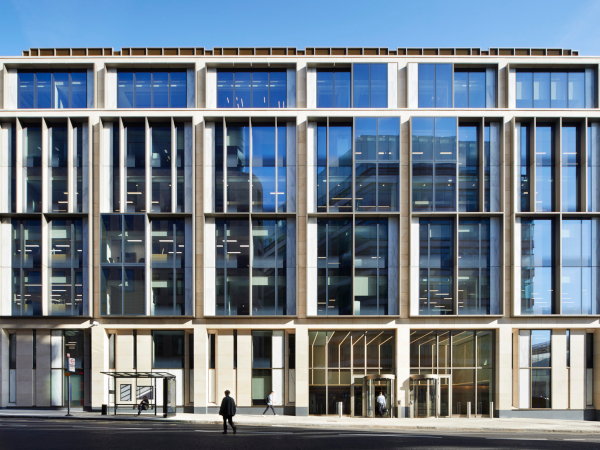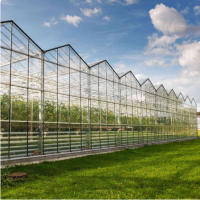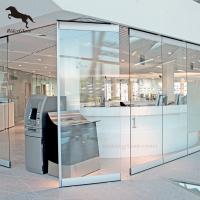Date: 25 February 2003
See the full story below for a look at the design of Toledo's Maumee River Bridge, which will include 200-foot glass panels, illuminated by multicolored lighting at night.
A bridge that reflects Toledo's image
Toledo's new Maumee River Bridge will include some of the usual materials.
Large segments of precast concrete reinforced with steel bars.
The pylon also made of concrete.
Stainless steel sheathing covering steel cables.
And then there's the one unprecedented exception: glass.
The pylon on the cable-stayed bridge will include 200-foot glass panels on all four sides that will reflect light during the day and, at night, will be illuminated by lighting that can change colors.
Cathy Mott, 48, of Toledo, a neighborhood activist who was the citizen representative on the Maumee River Crossing Task Force, credits the late Eugene Figg and others in his firm for their vision on how to incorporate glass into the bridge.
Residents of Toledo - whose renown in the glass industry gave rise to that city's nickname as the "Glass City" - wanted glass to be among the design elements on the new bridge.
Linda Figg, who now heads the Figg engineering firm, said designers worked with the community to develop a theme, and Toledo chose glass.
"The public came out and said we want glass," Mott said. "We were looking at different ways to embellish the structure with glass, either through street lighting or whatever. We had no idea."
While that idea struck some as questionable at first, the designers didn't flinch.
"When Gene Figg started looking at it, when you had people who have some sense of vision involved, you got the creative process started," Mott said.
"When they came up with the glass in the pylon, everybody was just thrilled," she said. "What's so neat about it is that it'll change colors.
"It's just going to be one of the landmarks of the city of Toledo that will be here for years to come."
The glass system for the Maumee River Bridge underwent extensive engineering analysis and physical testing, said W. Denney Pate, senior vice president and principal bridge engineer for Figg Engineering Group of Tallahassee, Fla.
A full-size section of the pylon was constructed with the glass system installed. The model was then subjected to the same tests required for glass window-walls in buildings in hurricane-prone areas such as south Florida. Specifically, wind pressure tests, flying debris such as rocks, and pieces of wood such as two-by-four building studs and even gunfire were evaluated.
"The glass system performed flawlessly in all the testing," Pate said.
In addition to the physical tests, a "disabling glare analysis" was performed similar to that required for large buildings. The lower elevation for the glass system was selected in part because of this analysis, Pate said.
In the late 1990s, the Ohio Department of Transportation presented citizens with four bridge design options: a steel truss, a concrete box girder, suspension and cable-stayed.
"The overwhelming consensus was we wanted something modern," said Mott, the citizen representative on the Maumee River Crossing Task Force.
Her neighborhood is less than a mile from where the bridge is under construction.
"We wanted something that looked toward the future, something that was reflective of the new millennium," Mott said.
With all the railroads and truss bridges already in Toledo, the truss option received scant support from those who showed up at public meetings, Mott said.
"They put the kibosh on that one," she said. "The concrete box girder looked sleek in design, but it didn't have that panache. But when they saw the cable-stayed, everybody went, "Wow!' "
Barbara Palazzo of Pendleton, a member of the Bi-National Civic Advisory Committee for the Peace Bridge expansion project, attended one of Toledo's public workshops for the bridge project.
Those who attended talked about the types of materials they wanted used. They were asked if they wanted painted steel cables or stainless steel cables.
Participants also talked about the colors of the glass, and they wanted to know if this concept had been used on any other bridge, Palazzo said.
"They wanted to make sure they weren't copying anybody else," Palazzo said. "They wanted to be different."
Figg Engineering is also introducing new technology for the Toledo bridge that Pate said improves aesthetics by decreasing the size of the pylon and allowing for a more slender shape.
What they're doing in Toledo could end up helping bridge designers and engineers on the Peace Bridge expansion project.









Add new comment